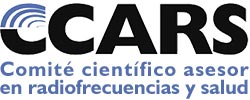4º International Workshop on Computational Phantoms

The first two workshops on computational phantoms, held at the National Board of Radiological Protection (NBRP), U.K. in 1995 and the Oak Ridge National Laboratory (ORNL), U.S.A. in 2000, played a key role in facilitating rapid research and development. The Consortium of Computational Human Phantoms (CCHP), formed in 2005 to foster international collaboration, published the landmark “Handbook Of Anatomical Models for Radiation Dosimetry” in 2009, an indispensable reference with contributions from 64 authors from 13 countries.
The 3rd International Workshop on Computational Phantoms for Radiation Protection, Imaging and Radiotherapy, held at Tsinghua University in Beijing, China was our most recent opportunity to exchange ideas towards guiding future research, and was the first time that this workshop included researchers from both ionizing and non-ionizing radiation dosimetry communities.
The objective of this workshop, the 4th installment International Workshop on Computational Phantoms for Radiation Protection, Imaging and Radiotherapy, is to discuss current issues and developments in the field and to formulate a roadmap for future research directions. The first-generation computational phantoms ? the stylized phantoms? were originally developed at the Oak Ridge National Laboratory in the 1960s for internal radiation dose calculations.
Research on the development of computational phantoms for investigation of various ionizing and non-ionizing radiation applications has continued since. Research during the 1990s was accelerated with the introduction of second-generation phantoms ? the voxel phantoms ? which emerged as a direct result of medical resonance imaging and computed tomography technologies. Continuing interest from the research community over the past decade has driven proliferation of computational phantoms, such that more that 100 models were available by 2009.
The momentum continues, and many recently developed techniques address emerging needs to simulate cardiac and respiratory motions, postures, as well as anatomical variability associated with gender, age, pregnancy, and obesity. The third-generation phantoms ? the boundary representation (BREP) phantoms ? made of non-uniform rational B-spline (NURBS) and meshes, offer the flexibility to deform shape and size while maintaining a high level of anatomical realism.
Application of these latest phantoms to the investigation of ionizing and non-ionizing radiation exposure has diversified to cover a broad range of radiation protection, imaging, and radiation treatment applications. Advanced computer simulation and visualization techniques have been adopted and expanded to include the ability to manage moving objects defined by the BREP geometries.
Over the years, both the ionizing and non-ionizing radiation communities have faced similar challenges in risk assessment, anatomical modeling of workers and patients, standardization, and software development. With the ongoing rapid advancements in medical imaging and computer technologies, there is no doubt that computational phantoms will continue to evolve during this decade. The 2011 3rd International Workshop in Beijing covered four main topics, The Chinese Visible Human Project; International Commission on Radiological Protection (ICRP) computational phantoms for ionizing radiation protection; reference phantoms for the analysis of non-ionizing radiation protection; and new tools and applications, including Monte Carlo calculations in NURBS/meshes and CAD phantoms.
The rapid proliferation of new computational phantoms demands that we convene again to evaluate progress, share our latest achievements, and identify future research directions. The 2013 three-day workshop and exhibition in Zurich will focus on the latest developments in computational phantoms, including standardization and validation, and computational applications.
Todas las fechas
- De 20/05/2013 00:00 a 22/05/2013 00:00
Desarrollado por iCagenda


